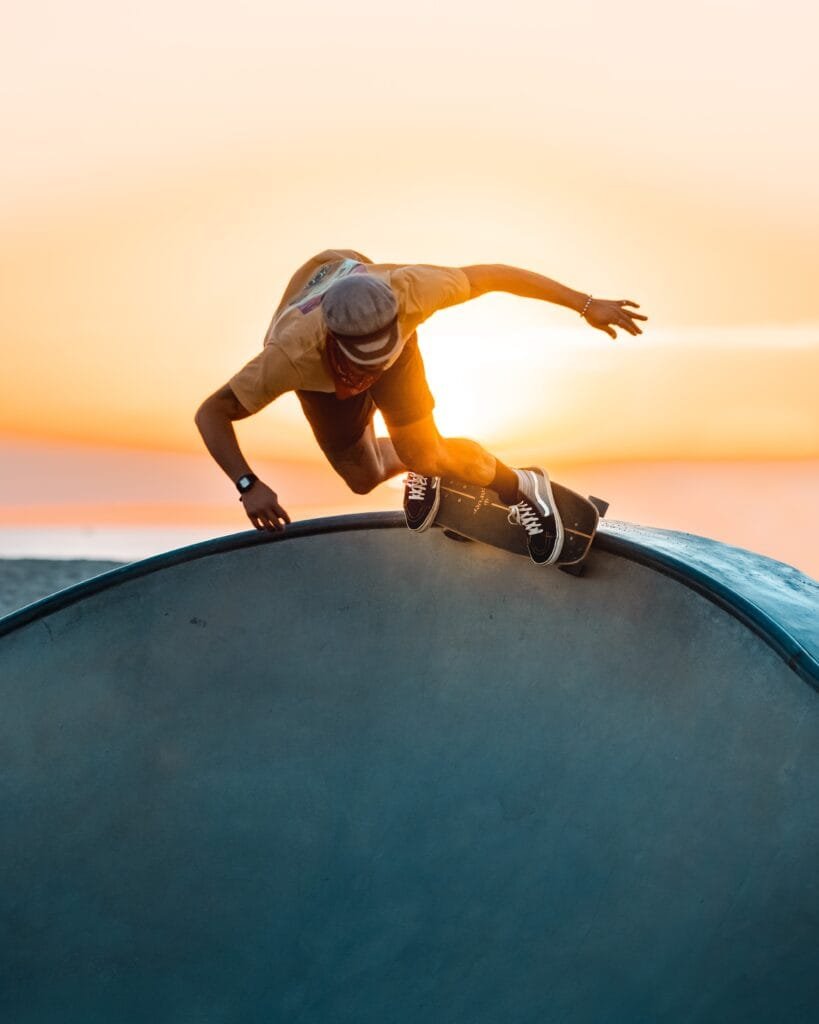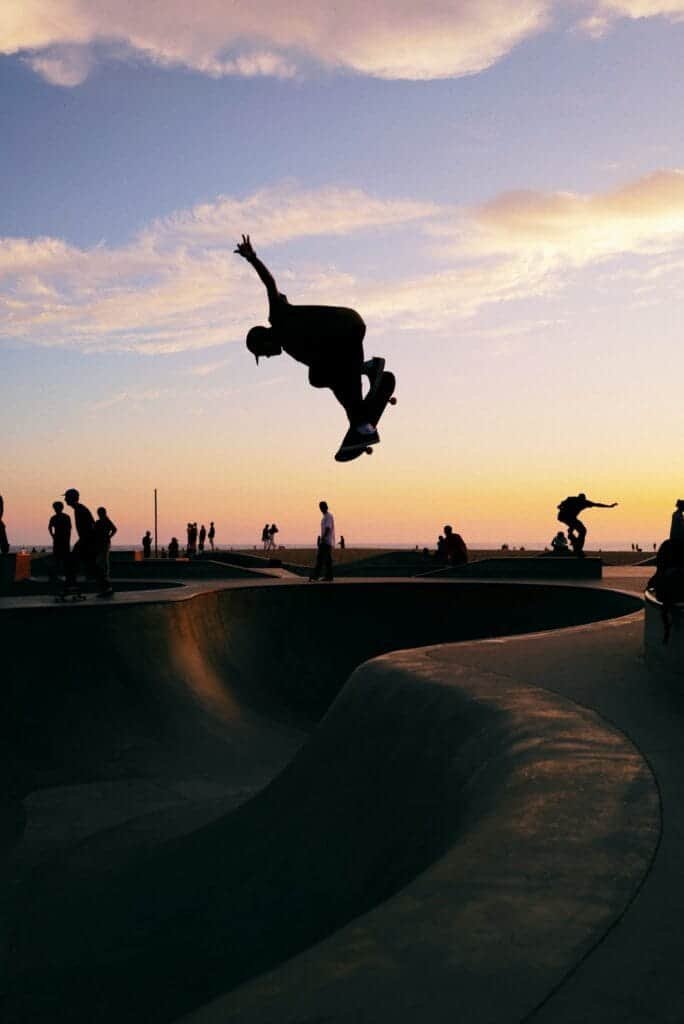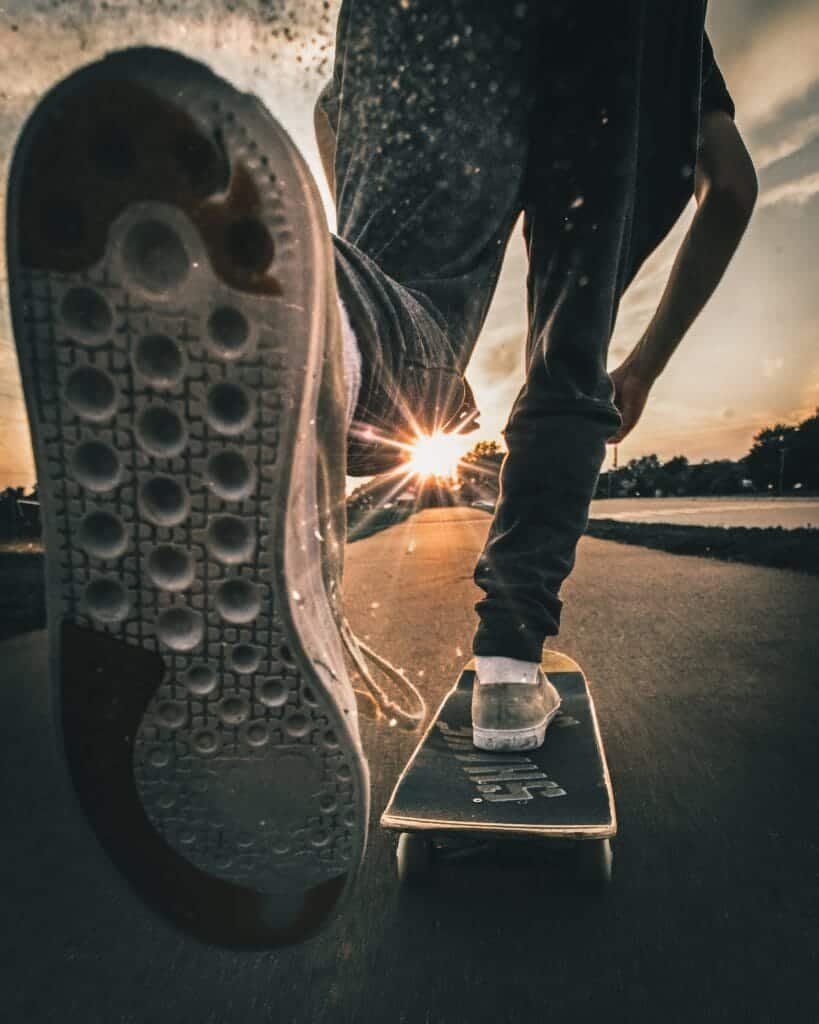Learning kickflips can be an exciting and challenging endeavor for skateboard enthusiasts like yourself. However, to master this trick, it’s crucial to steer clear of certain common mistakes that could hinder your progress. In this article, we will explore the key errors to avoid while learning kickflips, providing you with valuable insights and tips to help you achieve success in mastering this impressive skateboard maneuver. Kickflips are a popular trick in the world of skateboarding that can add style and flair to your riding. However, learning to execute a kickflip can be a challenging process, especially for beginners. In this article, we’ll discuss the common mistakes that many skateboarders make while learning kickflips and provide tips on how to avoid them. By understanding and avoiding these mistakes, you’ll be on your way to mastering this impressive trick.

Head Positioning
Looking at the ground
One common mistake that skateboarders often make while attempting kickflips is looking at the ground. This can negatively impact your balance and make it difficult to execute the trick properly. Instead, try to keep your focus forward and maintain visual awareness of your surroundings. This will help you maintain balance and control throughout the trick.
Looking down too early
Another mistake is looking down too early during the trick. This can cause you to lose focus and throw off your timing. Instead, keep your gaze steady and focused on the board until the right moment to look down and spot your landing. This will help you execute a clean and controlled kickflip.
Not keeping gaze steady
A steady gaze is crucial for maintaining balance and control while performing a kickflip. Many skateboarders make the mistake of letting their gaze wander or dart around, which can lead to loss of balance. Keep your eyes fixed on a specific point ahead of you during the entire trick, and resist the temptation to glance elsewhere. This will help you maintain steady balance and execute a smooth kickflip.
Foot Placement
Incorrect position on the board
Foot placement plays a vital role in executing a successful kickflip. One common mistake is placing your feet too far apart or too close together on the board. This can affect your ability to generate the right amount of pop and flick. To avoid this, ensure the width of your stance is comfortable and balanced, with your front foot slightly angled towards the nose of the board and your back foot positioned on the tail.
Improper weight distribution
Another mistake is not distributing your weight properly between your front and back foot. If your weight is primarily on your back foot, it can make it difficult to generate enough pop when you flick the board. Conversely, if your weight is too far forward, it can throw off your balance and make it challenging to land the trick. Find the right balance by evenly distributing your weight between both feet during the entire trick.
Inconsistent foot placement
Consistency is key when it comes to foot placement. Many skateboarders make the mistake of placing their feet differently with each attempt, which makes it difficult to develop muscle memory and consistency in executing a kickflip. Ensure that you place your feet in the same positions every time you attempt the trick, maintaining the same width of stance and angle of your front foot. This will help you develop a solid foundation and improve your chances of landing kickflips consistently.
Body Posture
Leaning too far forward or backward
Maintaining proper body posture is essential for executing a smooth kickflip. Leaning too far forward or backward can throw off your balance and make it challenging to execute the trick properly. Instead, aim to keep your body upright and centered over the board throughout the entire trick. This will help you maintain stability and control.
Not staying centered
Another mistake is failing to stay centered while performing a kickflip. This can result in your body moving off balance and the trick becoming unstable. To avoid this, focus on staying centered and aligned with the direction of your board. Keep your body positioned directly above the board, making sure not to shift too far in any direction. This will help you maintain control and increase your chances of landing the trick successfully.
Stiff and rigid body
Having a stiff and rigid body while attempting a kickflip can hinder your performance. It’s important to stay relaxed and fluid throughout the trick, allowing your body to move and respond naturally. Relax your muscles and focus on staying loose and flexible. This will improve your overall control and make it easier to execute the kickflip smoothly.
Insufficient Pop
Lack of forceful pop
A common mistake is not generating enough forceful pop when you initiate the kickflip. The pop is what gives the board its upward momentum and allows you to flick it with your front foot. To avoid this mistake, make sure to apply enough pressure on the tail of the board when you pop. Focus on pushing down hard and quickly to generate a powerful pop that will propel the board into the air.
Inadequate back foot movement
The movement of your back foot is critical for a successful kickflip. Many skateboarders make the mistake of not dragging their back foot up the board with enough speed and precision. This can result in a weak flick and an inconsistent rotation of the board. To avoid this, practice dragging your back foot up the board in a quick and controlled motion, initiating the flip of the board.
Popping at the wrong time
Timing is everything when it comes to executing a kickflip. Popping the tail of your board at the wrong time can throw off the trick and make it difficult to flick the board properly. To avoid this mistake, focus on popping the tail of your board just as your back foot reaches the peak of its upward motion. This will ensure that the board has enough momentum to execute a clean kickflip.

Inconsistent Flick
Not flicking with enough force
Flicking the board with your front foot is a crucial element of a kickflip. Many skateboarders make the mistake of not providing enough force when flicking, resulting in a weak flip and an incomplete rotation of the board. To avoid this, focus on flicking your front foot with enough speed and force to initiate a strong rotation of the board. Practice the motion repeatedly until you achieve a consistent and powerful flick.
Sending the board in the wrong direction
Another mistake is flicking the board in the wrong direction. This can lead to the board flying off to the side instead of flipping vertically. To correct this, make sure to aim your flick towards the edge of the nose of the board. This will help ensure that the board flips horizontally and allows you to catch it cleanly in mid-air.
Flicking too late or too early
Timing is crucial when it comes to flicking the board. Flicking too late or too early can disrupt the rotation and make it challenging to control the trick. To avoid this, practice flicking your front foot at the exact moment when the board reaches the peak of its upward rotation. This will allow you to achieve a consistent and controlled kickflip.
Poor Timing
Timing the flick incorrectly
Timing plays a significant role in the execution of a kickflip. Many skateboarders make the mistake of timing their flick incorrectly, resulting in a lack of control and consistency. To improve your timing, focus on practicing the kickflip motion repeatedly. With practice, you’ll develop a better sense of timing and be able to execute the flick at the precise moment for a successful kickflip.
Takeoff timing errors
Another timing mistake is incorrect takeoff timing. If you take off too early or too late, it can throw off the entire trick and make it difficult to rotate the board properly. To avoid this, pay attention to the timing of your pop and flick. Ensure that you pop the board just as your back foot reaches the peak of its upward motion, followed by a quick and precise flick with your front foot. Practice the timing until it becomes natural and intuitive.
Landing too early or too late
Similar to takeoff timing errors, landing timing is crucial for a successful kickflip. Landing too early or too late can disrupt your balance and make it challenging to complete the trick smoothly. To improve your landing timing, focus on practicing the rotation and flip motion of the board, paying attention to the moment when the grip tape is facing up. This will help you gauge the right timing to bring your feet back onto the board for a clean landing.

Imbalanced Weight Shift
Uneven weight distribution
Balancing your weight correctly is essential for executing a kickflip. Many skateboarders make the mistake of having uneven weight distribution, favoring one side over the other. This can throw off your balance and make it challenging to land the trick. To avoid this, focus on evenly distributing your weight between both feet throughout the entire trick, maintaining a balanced stance. This will help you maintain control and stability.
Not shifting weight properly
Proper weight shifting is crucial for generating the right amount of pop and maintaining balance during a kickflip. Some skateboarders make the mistake of not shifting their weight properly, resulting in a weak pop and a lack of control. To avoid this, focus on applying pressure evenly on the tail of the board when you pop and shifting your weight slightly towards your front foot for the flick. This will help you generate the necessary pop and maintain stability throughout the trick.
Losing balance during execution
Losing balance during the execution of a kickflip is a common mistake among skateboarders. This can happen due to uneven weight distribution or improper weight shifting. To maintain balance, focus on keeping your body centered and aligned with your board. Engage your core muscles and maintain a controlled and balanced posture throughout the entire trick. This will help you maintain stability and increase your chances of landing the kickflip successfully.
Lack of Commitment
Not fully committing to the trick
Lack of commitment is a common mistake that skateboarders make while attempting a kickflip. Fear of falling or getting hurt can cause you to hold back and not fully commit to the trick. However, without full commitment, it becomes challenging to execute the kickflip with the required speed and precision. To overcome this, build confidence gradually by practicing on flat ground and gradually progressing to higher obstacles. Visualize yourself landing the trick and mentally prepare yourself to give it your all. With increased commitment, you’ll improve your chances of landing the kickflip successfully.
Fear of falling or getting hurt
Fear is a natural feeling when attempting new tricks, especially those that involve spinning and flipping. However, letting fear hold you back can prevent you from progressing and mastering the kickflip. To overcome the fear of falling or getting hurt, start by practicing in a safe and controlled environment, such as a skate park or an open and spacious area. Use protective gear such as a helmet and knee pads to build confidence and provide a sense of security. Gradually push your comfort zone and embrace the challenge, reminding yourself that falling is part of the learning process. With perseverance and the right mindset, you’ll be able to overcome your fears and progress in mastering the kickflip.
Bailing out mid-air
When attempting a kickflip, some skateboarders make the mistake of bailing out mid-air due to fear or lack of commitment. This can result in an incomplete rotation or an unstable landing. To avoid this mistake, focus on maintaining control and stability throughout the entire trick. Commit fully to the rotation and flick, and maintain focus until your feet are securely back on the board. Trust yourself and your abilities, and resist the temptation to bail out mid-air. With practice and confidence, you’ll be able to complete the trick smoothly and confidently.
Insufficient Practice
Lack of regular practice
Skateboarding, like any skill, requires regular practice to improve and master. Many skateboarders make the mistake of not dedicating enough time to practicing kickflips, leading to slow progress and inconsistent results. To avoid this, set aside dedicated practice sessions specifically focused on kickflips. Consistency is key, so try to practice at least a few times a week, gradually increasing the duration and intensity of your sessions. The more frequently you practice kickflips, the faster you’ll develop the necessary skills and muscle memory to execute the trick successfully.
Not dedicating enough time
Another mistake is not dedicating enough time to practice kickflips. Learning a new trick takes time and effort, and expecting instant results can lead to frustration and discouragement. Instead of rushing the learning process, be patient and give yourself the time needed to practice consistently. Set realistic goals and milestones, celebrating small victories along the way. By dedicating enough time and effort to practice kickflips, you’ll see steady progress and improvement over time.
Neglecting repetition and muscle memory
Repetition is crucial for developing muscle memory, which is an essential component of mastering kickflips. Many skateboarders make the mistake of neglecting repetition and not focusing enough on ingraining the trick into their muscle memory. To avoid this, practice kickflips repeatedly, focusing on consistent foot placement, timing, and technique. The more you repeat the trick, the more natural and effortless it will become. Embrace the process of repetition and view it as an opportunity to refine your skills and improve your consistency.
Skipping Progression Steps
Not mastering basic skateboarding skills
Skateboarding is a progression-based sport, and mastering the basics is essential before attempting more advanced tricks like kickflips. Many skateboarders make the mistake of skipping basic skills and going straight to complex tricks, leading to frustration and discouragement. To avoid this, focus on developing a strong foundation by mastering fundamental skateboarding skills such as ollies, manuals, and shove-its. These skills will provide a solid base and enhance your overall control and board manipulation, making it easier to progress to more advanced tricks like kickflips.
Attempting advanced tricks too soon
Similar to skipping basic skills, attempting advanced tricks too soon can hinder your progress and increase the risk of injury. It’s important to have a solid foundation and confidence in your skateboarding abilities before tackling tricks like kickflips. Take the time to build your skills gradually, mastering each step along the way. This will not only improve your overall technique but also reduce the risk of accidents and frustration. Practice patience and allow yourself to progress naturally, building upon your existing skills and knowledge.
Failing to build a solid foundation
A solid foundation is crucial for success in any endeavor, and skateboarding is no exception. Failing to build a solid foundation by neglecting the basics can lead to a lack of control, consistency, and progress. To avoid this mistake, focus on building a strong foundation by practicing and refining fundamental skateboarding skills. Develop a solid understanding of board control, balance, and foot placement before attempting more advanced tricks like kickflips. By having a strong foundation, you’ll be better equipped to learn and master new tricks effectively.
In conclusion, learning kickflips requires dedication, practice, and a keen eye for detail. By avoiding common mistakes like looking at the ground, having improper foot placement, maintaining incorrect body posture, lacking pop and flick, having poor timing, imbalanced weight shift, lack of commitment, insufficient practice, and skipping progression steps, you can improve your chances of mastering this impressive trick. Remember to be patient, stay positive, and enjoy the process of learning. With consistent practice and a determined mindset, you’ll soon be executing kickflips with skill and style. Keep pushing your limits, and most importantly, have fun!
